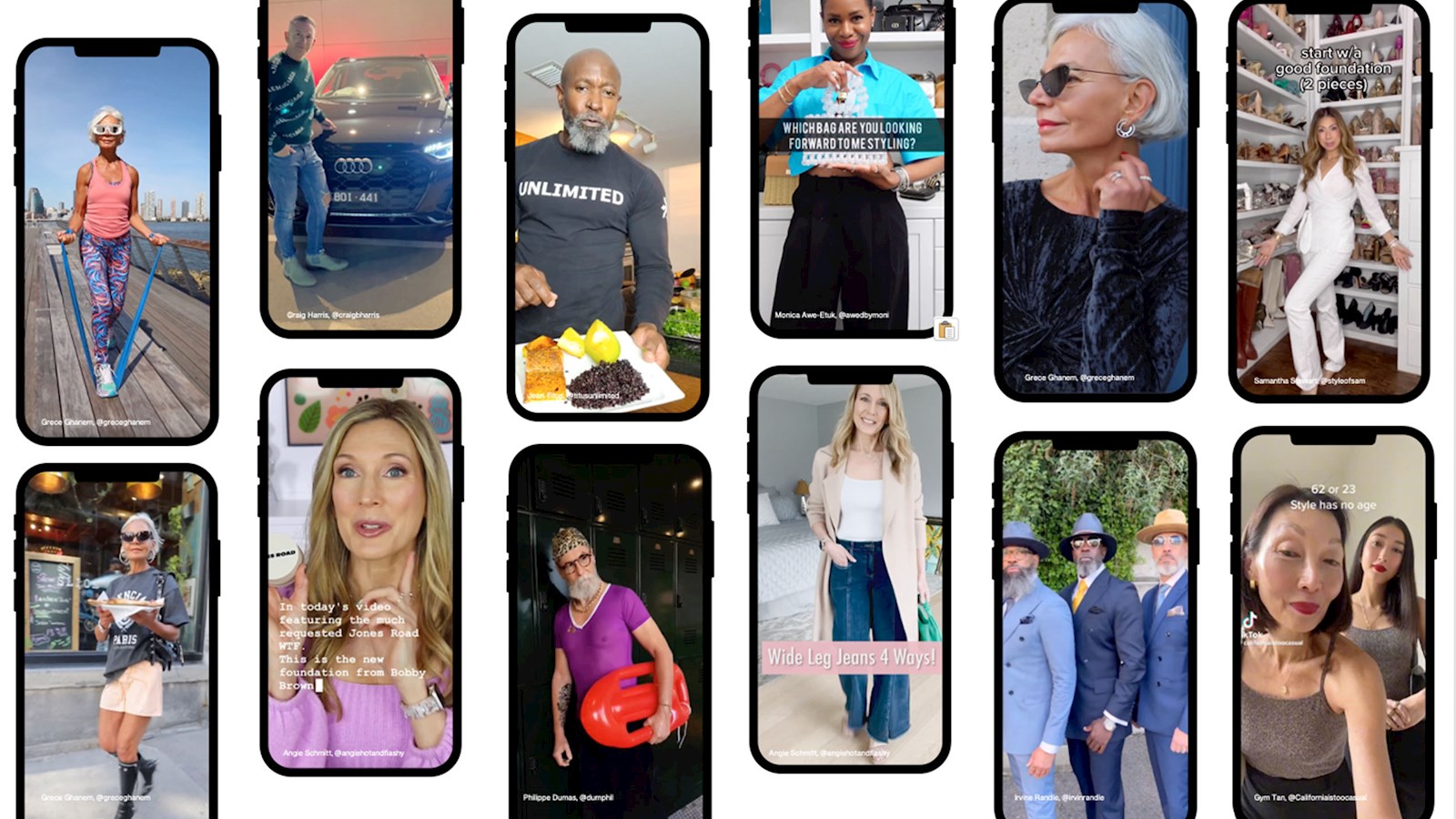
Finding the Gen X factor
Zoe Bowen-Jones and Damian Thompson of WPP's Wavemaker confront bias and marketing mishaps to over 45s in social
Sometimes you’re shocked by discovering a blind spot you didn’t know you had, a self-limiting bias hiding in plain sight. Reading Wavemaker’s research into how the industry regards middle-aged users of social media was, for us, one of those wonderfully provocative moments.
It seems strange that an industry so heavily managed by Gen X – people aged 45-60 – should struggle to give this audience the attention it deserves. Perhaps we see ‘other’ generations as the ones we need to study and understand. Gen X makes up 31% of the global population but accounts for just 4% of industry research into different generations.
Our default belief is that Gen X engage and consume on social just as younger generations do. Of course, they don’t. Gen X bring decades of learned media behaviour and preferences for the ways in which they allow brands and creators to engage them.
In overlooking this group, brands and agencies are overlooking a multi-trillion-dollar market. Gen X is responsible for 27% of global spending and, with rapidly rising earnings and savings, entering the most financially rewarding stage of their lives.
Our bias is skewing marketing decisions. In fact, 92% of Gen X are on social every day and are more confident users of new technology than Gen Z (aged under 26). On TikTok they comprise 28% of users and are the fastest-growing generation on the platform. Yet just 5% of brand spend on influencer campaigns is targeted at Gen X.
But where there’s a bias, there’s an opportunity in correcting it. Connecting with almost 200,000 Gen X-ers around the world in the first research of its kind, our team uncovered four unique social behaviours that underpin a set of practical ‘don’ts and dos’ for brands.
What is social for Gen X?
To find out what a successful Gen X social strategy looks like, first we need to understand their behaviour – and what drives it. This is not simple. The period between 45 and 60 spans a rollercoaster of life stages, all of which involve emotional upheaval, new horizons, new costs and new spending habits.
1. Social is the new town square
Gen X has translated real-life relationships onto a range of platforms and uses them like a ‘town square’– place where people come together to connect, chat about their interests, buy and sell, be entertained and serve their local community. For some, social fulfils a profound emotional need. Our respondents described social media as filling physical absences, meaning you’re never alone if you don’t want to be – when getting home from work, or eating a meal, or when the kids have left home. The desire for connection is the top reason why Gen X use social media. This isn’t unique; it’s a universal driver to platforms. The difference is that Gen X limit connection to their close circle where younger generations engage with people further removed from them.
2. It’s real life, not #BestLife
A common misconception about social media is that it is the platform which drives user behaviour. Bringing your filtered, best self to Instagram or waging keyboard war on fellow Twitter X users with different opinions. With a more established sense of self, Gen X are less concerned with performing versions of themself online. Instead, they use platforms to support the different real-life roles we all inhabit – friend, parent, entrepreneur and many more. The information, content, advice and support on offer in social acts as a kind of facilitator for these roles.
3. It's a time machine and a memory box
Nostalgia is a well-documented pull for every generation on social; for Gen X it’s super-sized, transporting them through space and time. Often the period for which they’re nostalgic pre-dates social media. From looking at old photos to connecting with school friends, it takes them to a place they ache to return to. Social plays a fascinating role for Gen X as an outsourced memory. It’s a phone book, address book, photo album and PA all in one – with the advantage of being collective and shareable.
4. It bookends every day
Just as you wouldn’t fail to say good morning or goodnight to your housemates, why wouldn’t you do the same to your network on Facebook or WhatsApp? Gen X, who grew up before the internet, has translated these ancient human rituals to the virtual world. This book-ending behaviour may look like that of younger users, but the blurring of boundaries between sociality, content, self- and brand-promotion that is native to Gen Z jars with Gen X’s desire to connect to their closest ties, rather than a wider esteem-boosting network. Usage is less about boredom relief than it is for younger generations; Gen X time on social is more scheduled and deliberate, uninterrupted me-time.
Don’ts and dos for a Gen X social strategy
DON’T underestimate the power of partners in building trust
DO consider the right partners as 'trust brokers' for social
Gen X distrust the very medium of social. For them, brands on social are untrustworthy until proven otherwise. This poses a particular issue because trust is +30% more important to Gen X’s buying decisions than it is for younger generations. One effective way for brands to build trust is by partnering with the right influencer, helping to bypass the additional steps Gen X go through to validate them.
DON’T try to dominate or change the conversation
DO follow the tone and be a well-mannered social citizen
Gen X recognises the power of social platforms to discover brands; our respondents told us it’s changed the way they shop. But Gen X is quicker to scroll on. If branded content feels out of kilter with the ‘town square’ character of their feed, they will just move past it. Posts from Gen X creators are, on average, +75% longer than posts from Gen Z or millennial creators. They also tend to be more in depth and informative, with softer, more self-improvement-type language compared with the direct, salesy tone employed by Gen Z.
DON’T expect Gen X to purchase in a single social click
DO accept that social is only step one in their purchase journey
Our data reveals Gen X as less promiscuous than younger consumers when it comes to what they buy. They consider 27% fewer brands and are more driven by need (+29% vs Gen Z and Millennials). Younger audiences are twice as likely to buy on impulse across all categories. So it’s unsurprising that the brand campaigns we tested were only half as effective at shifting purchase intent for Gen X than younger shoppers. Many of them go to other places to validate brands, which means brands need to see social as just one part of an ecosystem which builds trust.
DON’T assume one size fits all when it comes to influencers
DO work with Gen X creators who reflect this group’s lives
We all want to see ourselves reflected in the advertising we see, yet just 13% of Gen X feel represented, far lower than younger generations (although higher than Boomers at just 9%). In our research, Gen X responded significantly better to content which featured influencers of their own age.
The social media behaviours of the ‘wealthiest generation the world has ever known’ are unique, emotionally driven and nuanced. By seeing them for the first time, we can help our clients communicate with Gen X more powerfully, pave the way for better creator strategies and break the bias.
Wavemaker’s full Gen X report is available here.
The following people contributed to this research:
Wavemaker Team:Cristiana Bordianu, Stuart Bowden, Victoria Fairclough, Aleksandra Grabowska, Zoe Bowen-Jones, Kat Hamill, Julie Hamshere, Stuart Sullivan-Martin, Nic McCarthy, Ben McKay, George Munday, Sneha Sheth and Damian Thompson
Partners:
GOAT: Frankie Hobbs, Harry Hugo, CJ Murray, Arron Shepherd
GroupM: Sebastien Caudron, Philippe Gaeng, Stanislav Peev, Mischa Soriano
Content Creator: Claire Hall
L'Oréal: Alexandra Bolten
Meta: Ian Edwards
On Device: Alexandra Brill, Luxe Davies, Sarah Robson, Jamie Warren
Paramount: Pam Kaufman
published on
30 November 2023
Category
More in Experience

Let’s add audio for visually impaired audiences
How to make advertising more accessible for visually impaired audiences

The Future 100: wellbeing, humanity, emotion and tech
This annual trend spotter – by WPP’s VML – gives us the context for the new normal for marketing in 2024.

Activating sports events – the ultimate balancing act
WPP Sports Practice takes a look at the art of timing for sports event activation

